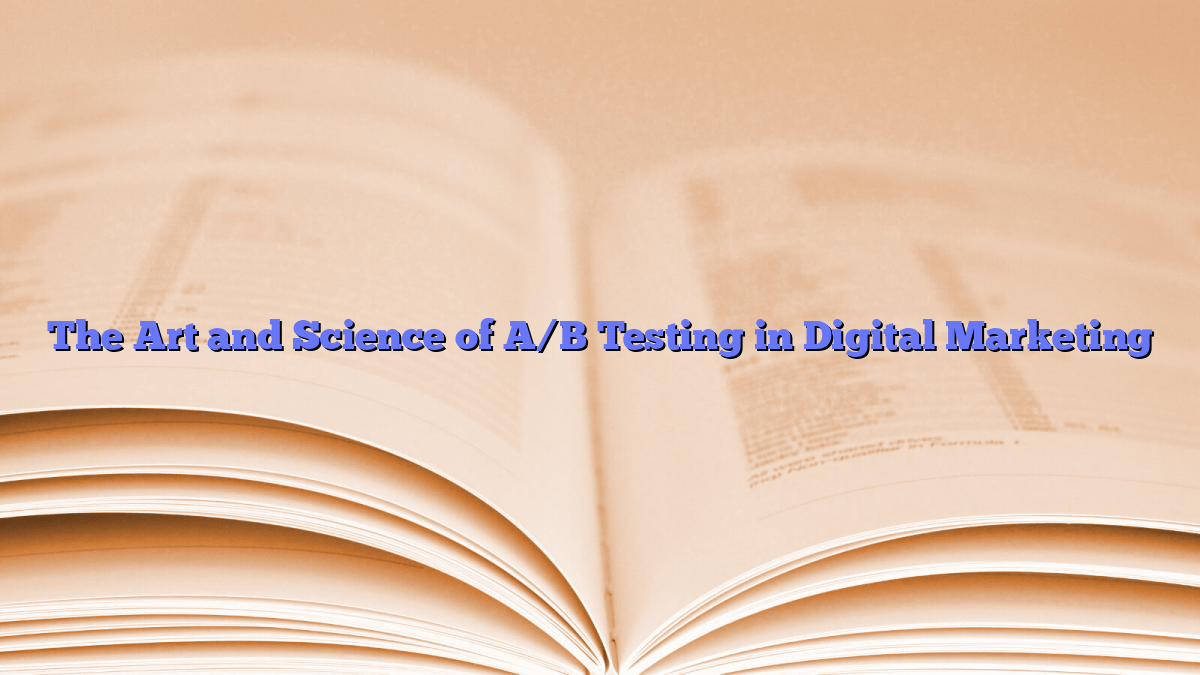[ad_1]
A/B testing, also known as split testing, is a method of comparing two versions of a web page or app to determine which one performs better. It is a fundamental tool in digital marketing, as it allows marketers to make data-driven decisions and optimize their campaigns for maximum impact. A/B testing can be applied to various elements of digital marketing, such as website design, email marketing, and advertising, to improve conversion rates, user engagement, and overall performance.
The Art of A/B Testing
A/B testing requires a creative and strategic approach to design and implementation. It involves creating variations of a marketing asset, such as a landing page or ad, and testing these variations against each other to identify which one resonates better with the target audience. Marketers need to carefully consider the elements to be tested, such as headlines, calls-to-action, images, and colors, and develop hypotheses based on audience insights and best practices.
Furthermore, the art of A/B testing lies in the ability to analyze and interpret the results effectively. Marketers need to identify patterns and trends in user behavior, draw insights from the data, and translate these insights into actionable changes. This process requires creativity, critical thinking, and a deep understanding of consumer psychology and market dynamics.
The Science of A/B Testing
On the other hand, A/B testing also involves a scientific and analytical approach. Marketers need to set up experiments properly, collect accurate and reliable data, and perform statistical analysis to determine the significance of results. This requires a sound knowledge of research methods, experimental design, and statistical testing, as well as the ability to use A/B testing tools and platforms effectively.
The science of A/B testing also requires a commitment to continuous improvement and learning. Marketers need to iterate on their experiments, test new hypotheses, and stay updated with the latest trends and best practices in A/B testing methodology. It also involves collaboration with data analysts, researchers, and other stakeholders to ensure the rigor and validity of the experiments.
Conclusion
A/B testing is both an art and a science in digital marketing. It requires a blend of creative thinking, strategic planning, and data-driven analysis to optimize marketing campaigns and achieve desired outcomes. The art of A/B testing lies in developing compelling variations and drawing actionable insights from the results, while the science of A/B testing involves setting up experiments rigorously, collecting reliable data, and performing statistical analysis. By mastering the art and science of A/B testing, marketers can drive better results, enhance customer experiences, and gain a competitive edge in the digital landscape.
FAQs
What are the key elements to A/B test in digital marketing?
Some key elements to A/B test in digital marketing include headlines, calls-to-action, images, colors, layouts, and form fields on landing pages, as well as subject lines, copy, and design in email marketing campaigns.
How long should A/B testing experiments run for?
The duration of A/B testing experiments depends on factors such as traffic volume, conversion rates, and the magnitude of the expected impact. Generally, it is recommended to run experiments for at least one to two weeks to capture different segments and behavioral patterns of the audience.
What are some best practices for A/B testing in digital marketing?
Some best practices for A/B testing in digital marketing include developing clear hypotheses, testing one element at a time, collecting sufficient data for statistical significance, and analyzing results in a timely manner. It is also important to document and share learnings across the organization to drive continuous improvement.
[ad_2]

